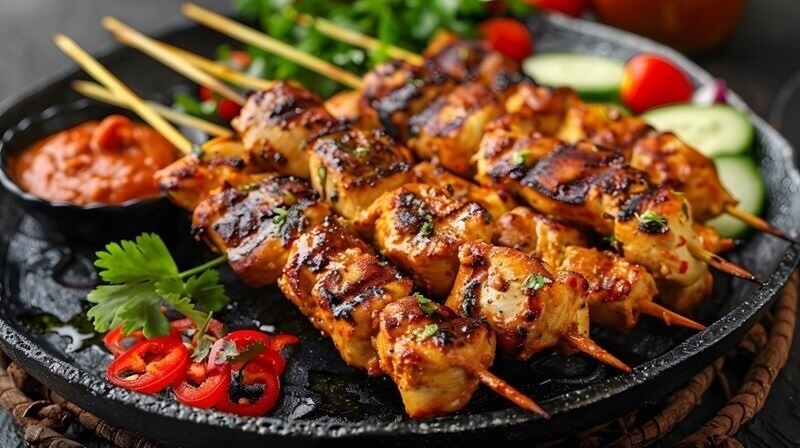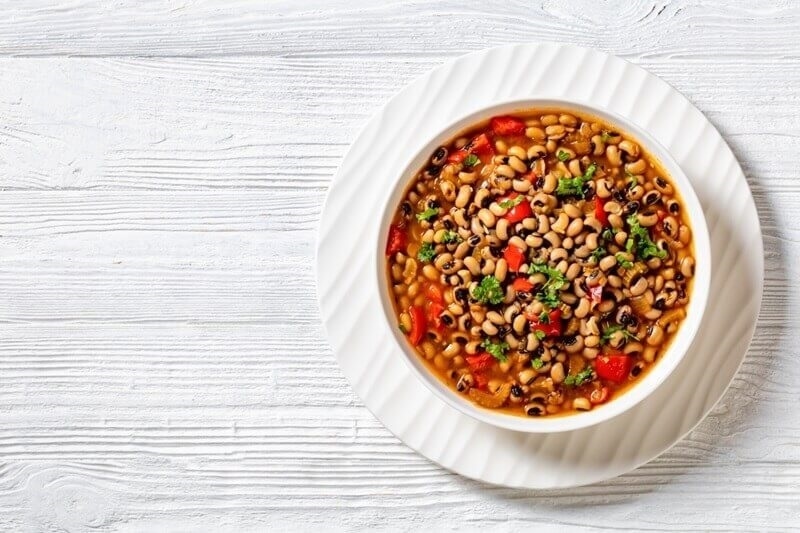
African foods are dense, textured, and nutrient-dense foods that also have the potential to add variety and nutrition to any diet. American consumers looking to add protein to their diet may have a potent and untapped weapon in African protein foods. Not only are the foods more dense in protein, but they also pack high fiber, vitamins, and minerals that also make an individual healthy.
This guide compiles the main protein foods of the African diet and gives you step-by-step recipes to guide you through incorporating them into your diet weekly. You'll learn useful tips about a healthy meal comprising protein-rich African beans along the way that will leave your food healthier without sacrificing its originality. Let’s explore legumes in African cooking and high-protein African vegetarian meals.
Before recipes, the main food sources of protein in African foods need to be known. Such foods are readily available at African and international markets across the U.S. and form the foundation of hundreds of traditional foods.
Legumes in African cooking are a mainstay of the West, East, and Southern African diets. Plant protein and fiber are the ideal combination for digestive and heart health.
Black-eyed peas (cowpeas): Small beans of creamy consistency that provide approximately 13 grams of protein per cooked cup. These are used in stews and fritters.
Bambara groundnuts: Usually subtly nutty in flavor, with nicely balanced levels of protein, fat, and carbohydrate, they slowly release energy.
Red kidney beans: Hulled or split, used in Kenyan githeri and Ghanaian bean stews, high in protein, iron, and folate.
Lentils: Center stage in many an Ethiopian and Eritrean stew, such as misir wot, they have about 18 grams of protein per cooked cup.
Chickpeas (garbanzo beans): A staple food in North Africa, eaten with grains or greens.
Health tip for African food: To conserve cooking time and minimize digestive problems of dry beans, soak them in water overnight. Rinse and drain canned beans to eliminate excess sodium prior to cooking.
Animal protein is also well covered in normal diets and provides complete protein and nutrients like iron and B vitamins. Knowing how to read African meat dishes nutrition will have you choose lean sections and cook them in ways that feed the heart.
Goat: They are frequently used in stews, curries, and barbecued foods like Nigerian suya and are good sources of iron and zinc. Cut away any visible excess fat to limit saturated fat content.
Chicken: They are frequently added to stews and barbecue suppers and add lean protein and ease to diets.
Fish (tilapia, mackerel, sardines): The hub of coastal diets, they are sources of protein and omega-3 oils for cardiovascular well-being.
Lamb: Often used in North African tagines, lamb is rich and protein-rich, yet more fatty.
Healthy African diet tip: Grill, stew, or bake, but not deep-fry, to try to leave out unhealthy fats without sacrificing flavor and this African meat dish's nutritional content.

In trying to make high-protein African vegetarian meals, plant-based staples are sufficient in protein and sources of micronutrients. They are usual staples of most traditional plant-based as well as vegetable cuisine.
Peanuts and peanut butter: Added to stews and sauces, delivering healthy fat and protein with sustained energy.
Leafy greens (spinach, kale, amaranth leaves): Found everywhere on the continent, adding iron, calcium, and fiber to a dish.
Ancient grains (teff, fonio, millet): Whole grain ancient grains with high protein content and minerals like magnesium and iron.
Plantains and yams: Typically served with nuts or beans to provide complex carbohydrates and with legumes for pairing and forming complete proteins.
Key to healthy African diet: Consume legumes with grains in order to get all the amino acids and cook complete protein meals without meat.
When you know staple foods, you cook healthy American food from home with ease. The recipes are adapted to American food and include protein-packed African beans, African food legumes, the nutritionalhigh-protein content of African meat meals, and healthy high protein African vegetarian food.
Type: Vegetarian
Main source of protein: Black-eyed peas
Ingredients:
Recipe:
Healthy African diet tip: Baking plantains instead of frying minimizes added fat but maintains their natural sweetness.
Type: Vegetarian
Major source of protein: Red kidney beans and corn
Ingredients:
Recipe:
Healthy African diet tip: Add a handful of spinach for the last 5 minutes for additional vitamins and iron.
Type: Meat-based
Major source of protein: Ground roasted peanuts
Ingredients:
Recipe:
Type: Vegan
Main protein source: Lentils
Ingredients:
Instructions:
Healthy African diet tip: Lentils are quick-cooking and high in intact plant protein, so this is a great weeknight dinner.
Type: Meat-based
Main protein source: Lamb
Ingredients:
Instructions:
African healthy diet tip: Brown and discard excess fat to reduce saturated fat when serving lean beef.
Uncovering African protein foods can unlock a whole universe of healthy, filling meals. Replace high protein African beans for lean meat to offset plant and animal proteins. Try various legumes of African dishes to incorporate fiber and diversity. Introduce high protein African vegetable meals in the middle of the week to reduce saturated fat intake without decreasing protein. And apply the principles of healthy African diets used herein to introduce nutrient-dense, balanced nutrition into your meals.
These dishes prove that African food can be genuine and accessible for American households. With the high protein content and robust flavors, they can help you meet your dietary requirements as well as introduce variety into your weekly menu.
This content was created by AI